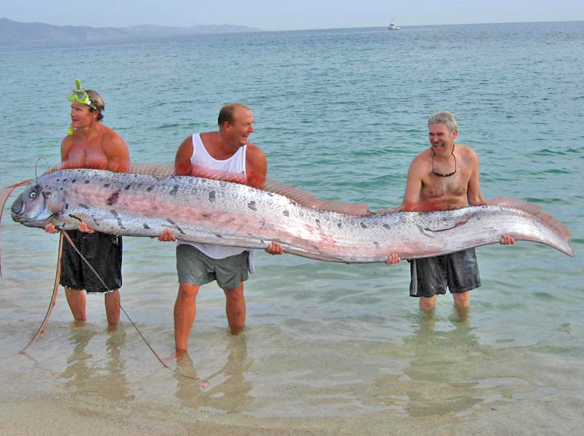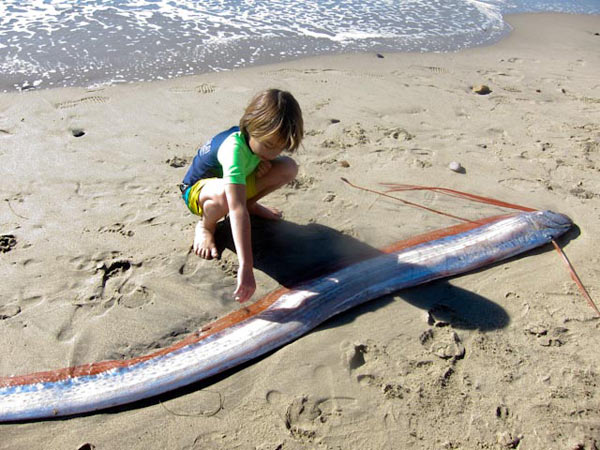Prehistoric? Almost certainly not.
Evolution is ultimately powered by energy. It's just too cold and there's not enough available energy down there for life to have developed large, carnivorous things that we haven't even conceived of. Hydothermal vents? Yes, that's energy, but the motherfucking SUN is in a different energy league several dozen orders of magnitude greater.
People go on about how little of the ocean we have explored, as if a percentage of surface with very little bioactivity has much bearing. The reality is that the overwhelming amount of marine life, its biomass and all of it's energy transfers between trophic levels happen with a few meters to a few dozen meters of the ocean surface. Primary energy input? The Sun.
Go down to the oceanic depths. What is the primary energy input for the vast majority of the bottom of the overwhelming amount of the world's oceans? Poop. Poop of the animals living above it. And the carcasses of things that didn't get eaten along the way down. Thermal? Only in the deep trenches, all isolated, all very few and fart between.
Large animal consume enormous amounts of food and chasing down prey isn't the most energy efficient of way of gather energy. That's why the largest animals of any sort are almost always "grazers." Largest shark? Not the Great White. Whale shark. After that? Nursing shark. Whale sharks and nursing sharks can weigh 40,000 to 80,000 lbs. Largest Great White? 5000 lbs. Largest animal on the planet? Blue whale.
So this giant undersea predator - what does it eat? How does it sustain its biomass? How would such a mechanism evolve in circumstances that, due to the amount of energy available, is prohibitive of fast speciation and specialization? 4 billion years just isn't enough time. Raw mineral availability to support eukaryotic life (aka, anything more complex than single celled bacteria) didn't happen until a billion or two years ago. Life really didn't start evolving except in the past 500 million years, not at the ocean's depths, but on its surface.
We've probably already seen the biggest thing to come up from the ocean depths - giant/colossal squid. Anything bigger will be along those lines. Or sedentary.
OTOH, 500 million years in the future? That's a much more interesting question.












